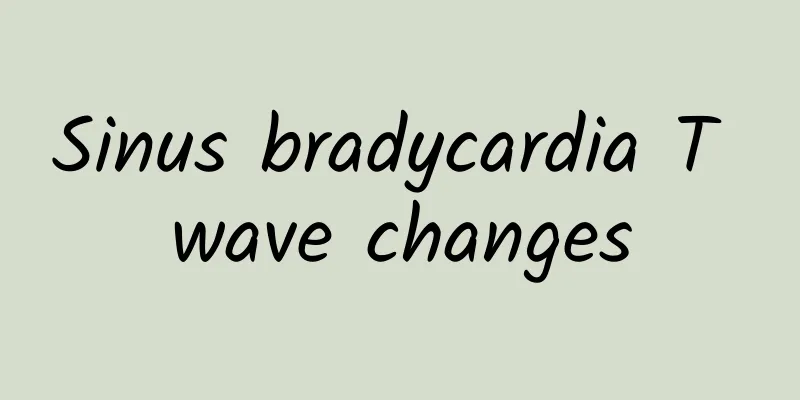What is the pathological cause of Wernike encephalopathy? What are the clinical manifestations?

|
Wernicke encephalopathy is a group of syndromes first described by Wernicke in 1881. It is rare in clinical practice, but because of its severe symptoms and life-threatening nature, some patients have considerable sequelae, so it is extremely harmful and must be taken seriously. So what are the causes and pathogenesis of this disease? Causes Wernicke encephalopathy is a serious neurological complication caused by vitamin B1 deficiency. Patients with hyperemesis gravidarum suffer from severe vitamin B1 deficiency due to frequent vomiting and inability to eat, which leads to a decrease in pyruvate dehydrogenase activity; pyruvate cannot fully enter the trihydroxy acid cycle for complete oxidation. When the activity of pyruvate dehydrogenase drops below 50% of the normal activity, sugar metabolism cannot proceed smoothly and tissue energy supply is affected. The brain tissue has a large demand for sugar energy. Once the energy supply is insufficient, it can cause damage to brain cells. In addition, vitamin B1 is also the main component of the nerve membrane of the nervous system. When it is severely deficient, it can affect the permeability of nerve cells, thereby causing their dysfunction, aggravating the corresponding brain tissue cell damage, and causing neurological and psychiatric symptoms. Pathological mechanism The pathogenesis of this disease is still unclear. The disease often affects the third and fourth ventricles and the area around the cerebral aqueduct. The mammillary bodies are the most vulnerable areas. Its main pathological features are degeneration and necrosis of nerve cells, proliferation of capillaries and astrocytes, and punctate and sheet-like hemorrhage foci. In the acute phase of Wernicke encephalopathy, fluid accumulates inside and outside cells, and small arteries, veins, and capillaries dilate with endothelial cell swelling and adventitia thickening, but neurons are relatively mildly affected or not affected. In the subacute phase, patients may experience demyelination and vascular changes, and in some cases, hemorrhagic lesions. In the chronic stage, neuronal loss may occur in the brain parenchyma, especially in the thalamus, leading to brain atrophy. Clinical manifestations The main symptoms of patients are memory loss, disorientation, ataxia and nystagmus. Some may also have amnesia and fictitious syndrome and paralysis of the extraocular muscles, pupil constriction, peripheral neuritis and hyporeflexia of the tendon. The protein content of cerebrospinal fluid is occasionally increased. Wernicke encephalopathy is often accompanied by signs of Korsakoff psychosis, which is characterized by marked memory loss, inability to acquire new information, and hyperarousal. These are often irreversible. About 7%-10% of patients with severe hyperemesis gravidarum suffer from this disease. Once patients with hyperemesis gravidarum develop central nervous system symptoms, this disease should be considered. |
<<: Etiology and pathogenesis of delayed encephalopathy in acute carbon monoxide poisoning
>>: What is a uterine gland cyst and what are its symptoms?
Recommend
What are the symptoms of cor pulmonale?
Cor pulmonale is a common disease, which is gener...
How long does a woman need to rest after miscarriage?
Just like giving birth, miscarriage requires conf...
Reasons why people feel tired and exhausted
There are many reasons why people always feel tir...
Why do I sweat in autumn?
Sweating in autumn is often night sweats. The wea...
What does high paraplegia mean and what are the symptoms?
The so-called high paraplegia refers to paraplegi...
Is black wolfberry acidic or alkaline?
Black wolfberry is a health food with very high n...
What are the dangers of taking too much calcium?
Calcium is an important trace element in the huma...
Blood-replenishing porridge for women, drink it to make them look good!
Lotus seed porridge"text-indent: 2em;"&g...
Effects and functions of dried fish
Dried fish can nourish the kidneys, strengthen th...
Can I take a shower when my period comes?
Women can take a bath during menstruation, but th...
Cold uterus + chin acne
Acne is a very common cancer that affects our ski...
The effects and harms of ginkgo
What are the side effects of Ginkgo biloba? Ginkg...
After constipation, there is flesh coming out of the anus
The situation where there is flesh protruding fro...
Four small actions can help you extend your life by at least ten years
Modern people live a fast-paced life and always s...
How to regulate liver qi deficiency? Chinese medicine teaches you how to regulate your diet
The liver is a very important organ in our lives....









